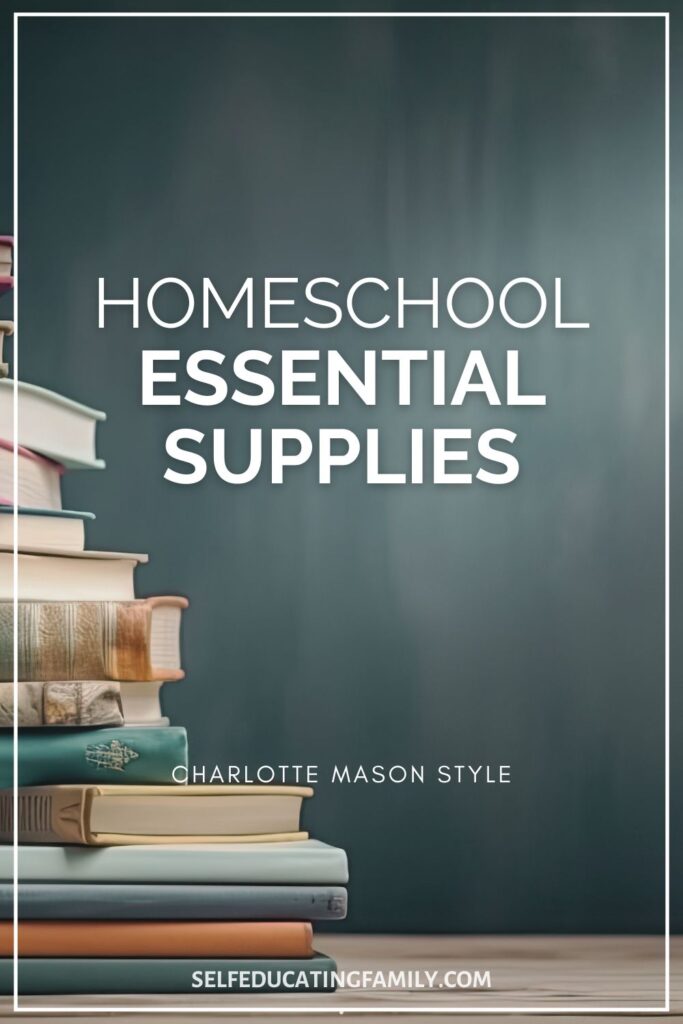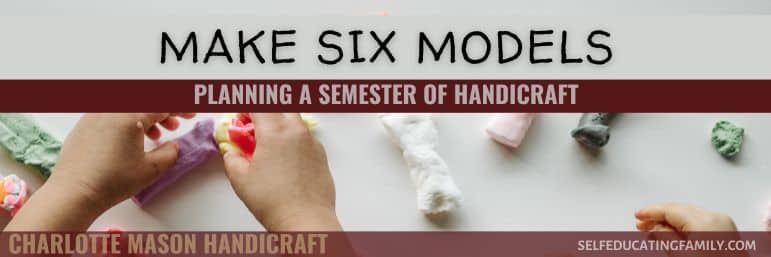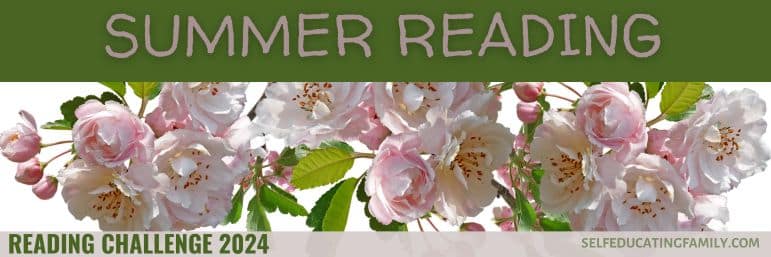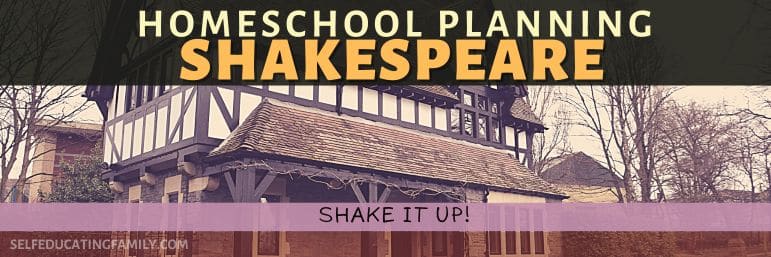What’s inside: Whether you’ve just started homeschooling or are trying to get ready for the next school year, there are plenty of homeschooling essentials and supplies you’ll need. Some of these will be obvious, but that doesn’t mean all of them are. And when you add a Charlotte Mason flair to the mix, you get an interesting list of essential supplies.
Planning ahead to have your supplies in order before you start a school year is a worthwhile idea. It’s a way to make sure everything goes well. Prepare where you can, as much as possible. This means making sure you have everything you need from the start.
It’s worth diving into some of the larger homeschooling essentials you’ll need to pick up.
This post may contain affiliate links. If you find my content valuable and make a purchase through one of my links, I will earn a commission at no cost to you, which helps me keep this blog going so I can help you even more! I recommend products I trust and/or use myself, and all opinions I express are my own. Read the full disclaimer here.
Homeschooling Essentials: 5 Top Picks
1: Books
Living books should be at the core of your “essentials” list.
“One more thing is of vital importance; children must have books, living books. The best is not too good for them; anything less than the best is not good enough. And if it is needful to exercise economy, let go everything that belongs to soft and luxurious living before letting go the duty of supplying the books, and the frequent changes of books, which are necessary for the constant stimulation of the child’s intellectual life.”
– Charlotte Mason
And with books comes someplace to stash the books… like a bookcase? We begin to delve into the idea of “Education is an atmosphere” — one of CM’s 20 principles.
2: Storage Space
How do you set up your learning space?
When you gather your books, equipment, and tools you will use to homeschool your child, you’ll need to set these up somewhere. A designated learning space can be great, but many families create flexible areas. Let’s divide up what we mean: you need space where the kids will learn and space to store your supplies & books.
It’s a good idea to have a designated area for the materials and supplies used in a routine day. Your kids should know where to go to get their books, notebooks, or materials and where to put them away.
Take morning basket time, for instance. Part of the time is a “reading together” time. You might want to spread out on the couch or go sit under a tree or sit at the breakfast table. But the basket of reading materials is always in the same spot. Your area for learning is flexible, but your materials are in a fixed location.
Your space for learning doesn’t have to be too large, but it is good for them to have somewhere comfortable to learn. Keeping your storage space and other homeschooling essentials nearby helps you to stay organized during the school year.
And please, help yourself by teaching everyone the habit of orderliness. It will keep your children’s learning space clutter-free and rid of distractions.
Make sure to actually use your designated storage areas and have the learning space cleaned up every day.
3. Notebooks & Basics
Some of the more obvious supplies to pick up are notebooks, pens, and pencils. But wait…
Does anyone else resent that “Back to School” sales at the office supply stores start in July? Excuse me, while I rant a moment. When I first started homeschooling, I LOVED the Back to School sales and I would flock to the store in July to get my 5-cent pencils, erasers, and glue sticks. I think I mostly resent the sales now because the glue stick sale price is over $1 now. Kids, can you say inflation?
Anyway, as obvious as these supplies are, it’s easy to overlook some of the more essential items. You’ll have to make sure you pick up the different types of notebooks, pens, and other basics your child could need.
Then there are some of the more specialized items you might need to pick up—which Charlotte Mason homeschoolers love. The blank journals, the Book of Centuries or timeline book, the commonplace notebook, the watercolor pencils, the nature journal.
And some of your math & science classes may need specific notebooks or paper. You could need to pick up blank graph templates, graph paper, scientific notebooks, special graphing calculators, and other specialized items, for example.
Blank binder notebooks are also good for a number of specialized CM subjects. We used them to keep track of current memory work, hymns, and folksongs. We had a designated scrapbook-like binder for our artist studies that we could look back on also.
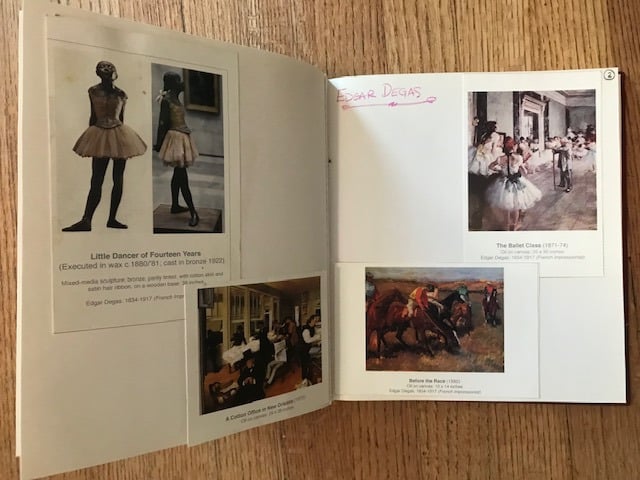
4. Planner
Your planner is a tool to get you through the school year. There’s usually so much going on, it can often feel relatively overwhelming, and it’s easy to overlook quite a few things. Keeping track in a planner helps to make sure this doesn’t happen.
With a planner, you can take a much more organized approach to homeschooling your kids. You can plan out exactly when specific subjects are covered, and what lessons you’ll have in place for your kids throughout the school year. With how much easier a planner makes organization, there’s no reason not to have one.
But remember, a planner is a tool to help you – you are not a slave to it! I liked to plan out only so much at a time instead of a full year. Of course, that was after a number of years of planning out a whole semester only to fall behind right away! It’s better to build in slack time, or use a flexible option like loop schedules. You have to account for things that come up. Because they will.
And don’t forget – your child needs some kind of planner. Checklists can work well for smaller kids and give them the opportunity to learn to control their own schedules. Part of your job is to make your kid a self-learner. Bigger kids can use a planner of their own if they like.
5. Whiteboard
It’s always worth having a few tools and pieces of equipment to help you homeschool your child. One of the more notable of these is a whiteboard, as it can be one of the more useful tools to help you teach your children. It lets you illustrate what you’re teaching your child relatively easily.
Lots of moms I know use the “mini-whiteboard” (like this) — a handheld version of a wall whiteboard. So useful for demonstrating lots of things.
On the wall, we have a “command central” with whiteboard and corkboard. We put up calendars and schedules along with any special lists or reminders currently going on.
At the same time, you can put up illustrations, schedules, and more. It’ll help you keep everything organized while also actively teaching your child. There’s no reason not to have one. Don’t forget to stock up on markers while you’re at it.
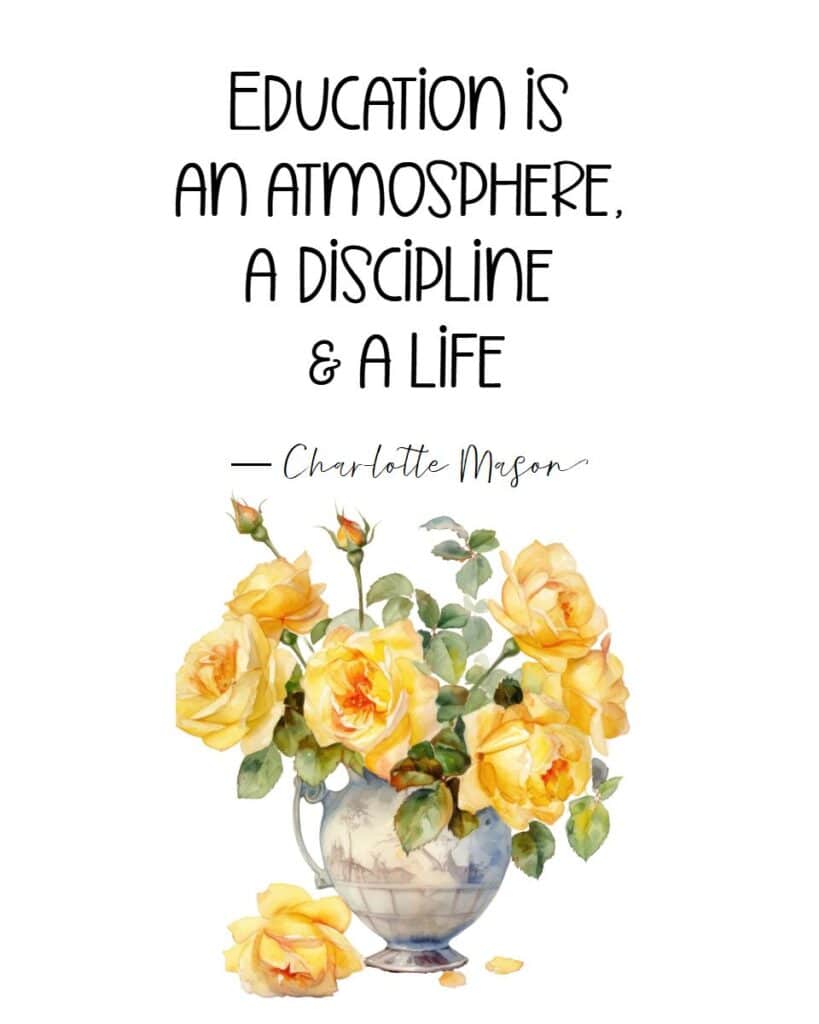
Education is an Atmosphere
Remember: your home and homeschool is a living space. Make some designated spaces within to create the atmosphere you want for “Education is an Atmosphere”.
I know some families who have regular tea time (it’s like morning basket, but in the afternoon), so they have a beautiful tea station set up.
I know another family who has a special frame where they can easily slip in all of the current artist’s pictures being studied. Then they’re on the wall for the semester where everyone can see them.
And what about composer study? Do you have a playlist that can play in your learning area? I always used CDs, but I think may be from a different era. I actually had a phonograph in my home when I was growing up.
Homeschooling Essentials: Wrapping Up
There are many homeschooling essentials you’ll need to invest in. When you’re just starting out with homeschooling your kids, that’s especially true. Even if you’ve been doing it a while, there’ll still be more than a few things you’ll need to pick up at the start of every year.
Since you’ll want to make sure everything goes as well as possible, it’s worth being as prepared as possible. But even if you overlook a few things, remember your big picture goals. By spending some time to organize your homeschooling essentials, that shouldn’t be a problem.
For more, watch this great discussion from Simply Charlotte Mason:
Related Posts
